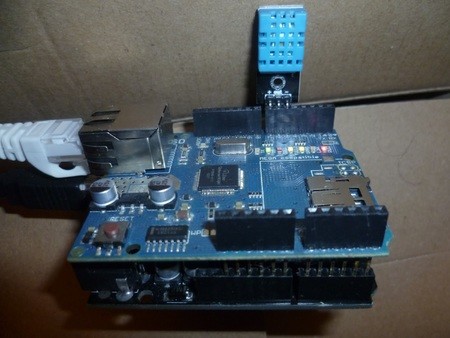Raspberry Pi and Arduino in industrial applications
April 28, 2016

When I think of the term MakerPro, I think of someone who has established his own business based on being extremely good at what people most consider...
When I think of the term MakerPro, I think of someone who has established his own business based on being extremely good at what people most consider a hobby. Interestingly, this can work the other way as well.
In my own experience, I remember working at a company that needed a way to breakout pins from a micro SD card. Being an experienced tinkerer both at home and on the job, I was able to source the appropriate device from a distributor geared toward electronics hobbyists when I couldn’t find one from the normal channels. My colleagues gave me a hard time about using a company called Sparkfun, but the device worked as designed, and I started to get a reputation for being able to find oddball components.

Taking things a few steps further, Alex Wilson, a technician I worked with at another company, was always eager to learn something new, and devised a way to set up a Raspberry Pi to collect data over the plant network from a PLC that was running a test station.
He accomplished this by installing node.js with the jQuery library on the ‘Pi, along with the jsmodbus module, which provides the ability to communicate with Modbus-enabled devices. The PLC, an Automation Direct 06 equipped with a TCP/IP module, was Modbus-compatible so it could be read over the network. According to technician, you could run a ‘node server’ for each connected device from one machine (a Raspberry Pi in this case), and then run a master node server on the same machine.
With these elements in place, he created a recursive function to poll the controller and log the data using winston and place it in a couchDB database. Data was then displayed as a scalable vector graphic image using D3.
With this nicely-graphed data, the technician could monitor product failures in more detail than was previously possible, and currently has four PLCs connected in this manner. The hope is that eventually these failures can be classified further by data signatures to more quickly determine their root causes.

In a different twist on things, MakerPro Steve Spence has set up an Arduino to collect temperature and humidity data, which is then inserted into a MySQL database, and can be displayed as a web page. Although this generally wouldn’t monitor industrial machinery directly, I could see something like this temporarily stored inside of an electrical cabinet to monitor temperature or other variables. This could then be correlated with machinery problems as needed. When Steve talks about his IoT server, he mentions that the Raspberry Pi can be used for this purpose. Another vote for using the ‘Pi to display data!
In the end, these types of tools would have a hard time competing on all fronts with rugged industrial controllers that have been proved out over the last 50 years. On the other hand, as these examples prove, there certainly are things that industry can take from devices that are more thought of as hobbyist tools. I’m all for standardization and using components, but it’s good to keep your eyes open to new technologies that might fit your application, whatever the source!
MakerPro (and potential MakerPros), check out this ‘Pi being in an industrial invironment with a barcode scanner.
Jeremy S. Cook is a freelance tech journalist and engineering consultant with over 10 years of factory automation experience. An avid maker and experimenter, you can follow his exploits on Twitter, @JeremySCook.




